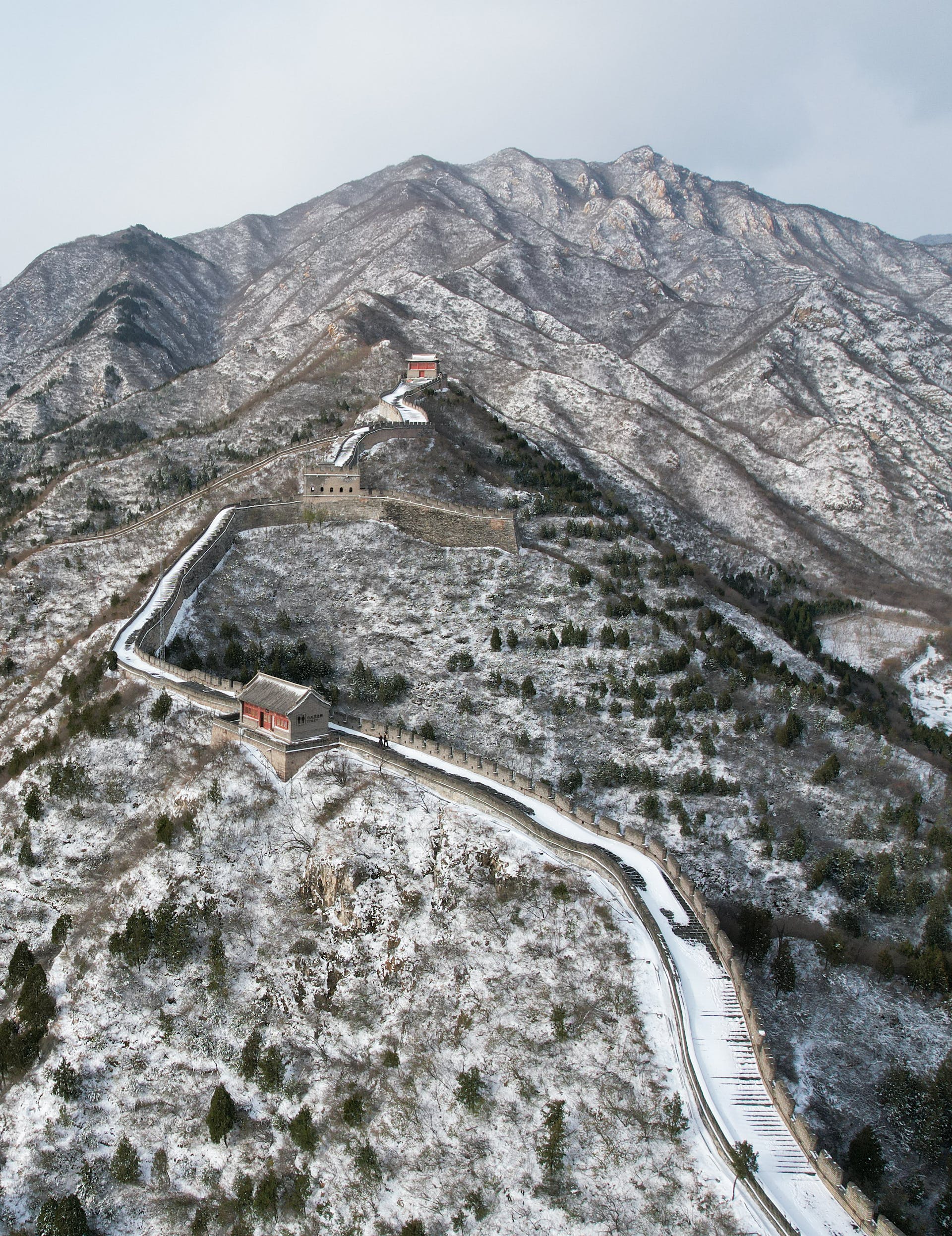Nature’s Shield: How Living Blankets Protect the Great Wall of China
Great Wall of China is protected by nature. In a surprising revelation, a recent study published in the journal Science Advances has highlighted the remarkable resilience of the rammed earth portions of the Great Wall of China. Often considered a structural weakness, these sections have, in fact, developed a natural defense mechanism against deterioration.
Soil ecologist Matthew Bowker, an associate professor at Northern Arizona University and co-author of the study, identified a unique phenomenon. The soil surfaces of the Great Wall are adorned with a “living skin” comprised of tiny, rootless plants and microorganisms known as biocrusts. Contrary to past concerns about biocrusts posing a threat to heritage stone structures, this study finds that they play a crucial role in enhancing the stability and resistance to erosion of the Great Wall.
The study examined samples from over 300 miles of eight rammed earth sections built during the Ming Dynasty, revealing that more than two-thirds of the area is covered in biocrusts. Comparing samples with and without biocrusts, researchers discovered that biocrust-covered samples were up to three times stronger. Professor Bo Xiao from China Agricultural University emphasized, “Biocrusts are very widespread on the Great Wall, and their existence is very beneficial to its protection.”
Describing biocrusts as a “blanket” covering the Great Wall, the study revealed that they resist chemical weathering, prevent salt buildup, and strengthen soil properties. With components such as cyanobacteria, algae, moss, fungi, and lichen, biocrusts create a “sticky network” that aggregates soil particles, promoting strength and stability.
As concerns grow over the deteriorating state of the Great Wall, China’s cultural heritage authorities have issued enhanced measures to safeguard the iconic structure. The circular emphasizes collaboration with local government departments, comprehensive surveys, and specific protection plans. Preservation efforts will focus on maintaining structural integrity and historical information, with strict regulations on rebuilding or large-scale restoration.
The directive also addresses tourism development, calling for cautious planning and dedicating ticket revenues to preservation efforts. The National Cultural Heritage Administration has ordered increased monitoring, patrolling, and stringent project approval processes, holding those responsible for damage accountable.
Despite these protective measures, recent cases of damage to sections of the Great Wall have been uncovered. The Ministry of Ecology and Environment identified five cases, including inadequate oversight of sand and stone mining and illegal wind power projects. The oldest existing section, the Zhao Great Wall, dating back to the Warring States Period, has suffered significant damage due to illegal mining.
In response to these challenges, experts suggest that the adaptability of biocrusts makes them potential candidates for nature-based interventions to address structural conservation in the face of an uncertain future. As the Great Wall battles multifaceted threats, the “living skin” of biocrusts may prove to be an essential ally in preserving this ancient marvel.
Ancient SuperHero
Hey, so the Great Wall of China? It’s like this ancient superhero that’s been standing tall for centuries, you know? Imagine it’s seen emperors, warriors, and workers, telling tales of battles and triumphs. Different parts have their own style – some rock a stone look, others go for earthy vibes.
It’s not just bricks and mortar; it’s a cultural badge, representing China’s strength and unity. And those watchtowers? They’re like the wall’s eyes, always on the lookout. Plus, it’s a champ at adapting to nature, winding through mountains and deserts.
Now, it’s a cool global guide, hosting millions of curious visitors. The Great Wall isn’t just a thing; it’s a living symbol of human spirit and teamwork, showing that even a bunch of rocks can tell an epic story.
